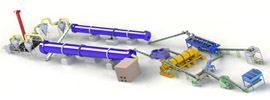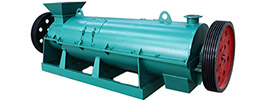Planning an organic fertilizer plant requires a holistic approach that balances production efficiency, environmental compliance, and long-term sustainability. Below is a structured plan tailored to these needs:
1. Site Selection Principles
- Raw Material Accessibility
- Prioritize proximity to livestock farms, crop regions, or food waste sources to minimize transportation costs.
- Secure long-term raw material supply agreements for stability.
- Environmental Compliance
- Maintain a minimum distance of 500 meters from residential areas, water sources, and ecologically sensitive zones.
- Ensure compliance with local zoning laws (industrial land use) and obtain environmental impact assessment (EIA) approvals and discharge permits.
- Infrastructure & Transportation
- Choose a site near highways or major roads for efficient logistics.
- Verify reliable access to electricity, water, and wastewater treatment networks.
2. Site Layout Design
- Functional Zoning
- Raw Material Zone:
- Separate storage for solid (e.g., manure, straw) and liquid (e.g., biogas slurry) raw materials, with impermeable floors and rain-proof shelters.
- Allocate space for solid material composting and turning.
- Production Zone:
- Arrange processes sequentially: pretreatment → fermentation → crushing → mixing → granulation → packaging.
- Enclose fermentation areas and equip with turning machines and temperature monitoring systems.
- Finished Product Zone:
- Design ventilated, moisture-proof warehouses with loading/unloading platforms.
- Environmental Protection Zone:
- Include wastewater treatment ponds (anaerobic + aerobic systems), deodorization towers, and rainwater-sewage diversion systems.
- Build impermeable leachate collection ponds for composting.
- Traffic Flow Optimization
- Separate pathways for raw material delivery, finished product distribution, and personnel to avoid cross-contamination.
- Ensure a unidirectional logistics flow within the production zone.
3. Environmental Protection Facilities
- Air Pollution Control
- Install bio-deodorization towers or UV photolysis systems in fermentation areas to meet odor emission standards.
- Cover raw material yards with biofilm or spray deodorizing agents.
- Wastewater Management
- Treat production wastewater via regulation ponds → anaerobic reactors → contact oxidation ponds for reuse or discharge.
- Collect initial rainwater in treatment ponds to prevent environmental pollution.
- Solid Waste Disposal
- Classify and collect waste packaging materials and dust residues, then engage licensed contractors for disposal.
4. Infrastructure Setup
- Power & Energy
- Size transformers based on total equipment power, with a 20% buffer.
- Use solar heating in fermentation zones to reduce energy consumption.
- Water Supply & Drainage
- Prioritize recycled water for production processes.
- Implement rainwater-sewage diversion with HDPE drainage pipes.
- Roads & Fire Safety
- Design internal roads ≥6 meters wide with turning radii ≥12 meters for heavy vehicles.
- Install fire water ponds, extinguishers, and emergency exits.
5. Safety & Scalability
- Safety Measures
- Create firebreaks around fermentation zones and power rooms, and equip with firefighting tools.
- Mandate protective gear for workers and conduct regular safety training.
- Expansion Readiness
- Reserve 30% of the site boundary for future production line expansion or facility upgrades.
- Design power and water systems for ultimate capacity, with phased implementation.
6. Compliance & Certification
- Regulatory Adherence
- Follow Regulations on Pollution Prevention from Livestock and Poultry Breeding and Organic Fertilizer Standards (NY/T 525-2021).
- Obtain ISO 9001 (quality management) and ISO 14001 (environmental management) certifications.
- Policy Incentives
- Apply for subsidies for agricultural waste recycling and environmental tax reductions.
Implementation Summary
- Site Research: Validate raw material, transportation, and EIA requirements.
- Layout Design: Finalize functional zones and traffic flow.
- Environmental Setup: Install air/water/waste treatment systems.
- Infrastructure Construction: Build power, water, and road networks.
- Safety & Scalability: Integrate expansion reserves and certifications.
This structured approach ensures efficient production, regulatory compliance, and adaptability for future growth.
 Send us a Email
Send us a Email Wulong Industrial Cluster
Wulong Industrial Cluster Have any question?
Have any question?



















